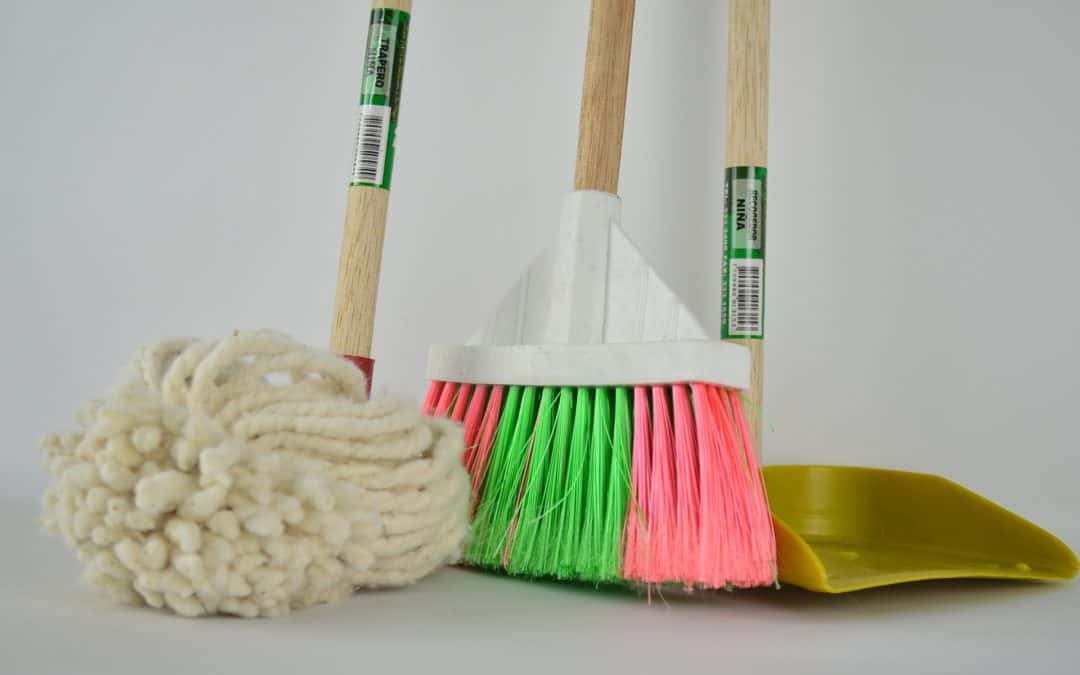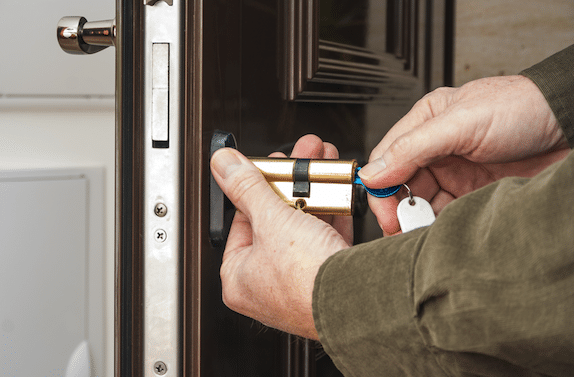Want to know the difference between mop and broom? Then, you are at the right page.
Keeping our homes clean is integral to living; having the proper tools will help you do it more quickly. Mops and brooms are two of the most popular cleaning equipment readily accessible in any home. However, many people must be taught about these distinctions and the best ways to use them.
A broom serves as a sweeping tool with stiff bristles for brushing trash and grime from the surface, whereas a mop serves to wipe down surfaces by wetting the ground area using water or other cleaning chemicals.
Continue reading this article to learn more about mops, brooms, their various types, and differences, and clear your confusion.
Before knowing the difference between mop and broom, let’s first know what Mops and Brooms are.
What are Mops?
:max_bytes(150000):strip_icc()/Wring-Mops-Group-Shot-tamara-staples-4373-d35562c309804af0a53a4c833cfaef2a.jpg)
Source: bhg.com
Mops are the most popular cleaning tool for cleaning floors, walls, and surfaces. Mops typically include a grip, a mop head, plus a wringer. Cotton, microfiber, or artificial fibers are utilized in the mop head’s creation as absorbent materials for applying water or disinfectant to the sanitized area. You can also mop hardwood floors with water.
The market currently offers a variety of mop types, each with unique advantages. Here, let’s examine the most typical types:
Type of Mops
Dust Mops: Such mops are made so that you may utilize them dry to collect dirt and other floor waste. Usually, they are constructed of artificial or microfiber substances that draw in and cling to debris and dirt.
Wet Mops: These mops are made for mopping floors using water or a chemical-based cleaner. They are often constructed from fabrics that can store a lot of water, such as microfiber or cotton, which are absorbing.
Steam Mops: Steam is used instead of toxic substances in these mops to disinfect and clean floors. They can kill bacteria and germs while being excellent at eliminating stains and dirt.
Sponge Mops: These mops feature a head resembling an absorbent sponge and are made to soak up water and disinfect the agent. They work great for removing marks and spills off tiles and laminate flooring, among other firm surfaces.
Spin mops: You may whirl out extra water while cleaning with these mops because they include an integrated wringer. As a result, they may clean surfaces more effectively and speed up the drying process.
Overall, the kind of floor you’re cleaning, the amount of grime and filth you must eliminate, and your cleaning inclinations will all play a role in helping you choose the best mop for your requirements.
What is Broom?

Source: homestratosphere.com
You can sweep walls, floors and other areas using a broom. Brooms often have an ergonomic grip and bristles from synthetic or organic components like plastic, maize husks, or straw. The purpose of these bristles is to collect particles and dirt to blow them off.
There are numerous varieties of brooms on the market, each with unique characteristics and advantages. The most typical varieties include:
Types of Broom
Push brooms: Meant for cleaning expansive surfaces like patios or driveways, push brooms feature big, broad heads. Usually, these are constructed from resilient synthetic bristles.
Whisk Brooms: These broomsticks have tiny heads with short grips developed for cleaning up tiny debris like crumbs or dust. You can clean indoors and comprise of synthetic or natural bristles.
Angle brooms are the best for cleaning corners and tiny places because of their inclined heads. You may use them for indoor and outdoor cleaning, and they generally consist of synthetic or genuine bristles.
Electric brooms: For cleaning up particles and dirt, these brooms utilize electricity to run the spinning brush. They’re usually portable and wireless, which makes them perfect for tight areas and instant clean-ups.
Corn Brooms: Crafted from organic corn husks, such brooms are great for removing bulky particles like sand or twigs. You can also use them for sweeping external surfaces, including driveways and pavements.
Let’s now know the difference between mop and broom.
Main Differences between Mops and Broom

Source: findthehomepros.com
| Basis | Mops | Broom |
| Cleaning | Used for cleaning walls, floors, and other surfaces by utilizing any cleansing solution or water on the surface | Used for sweeping debris and dirt off your floors and different surfaces |
| Variety | Available in various forms, from wet mops, dust mops, spin mops, steam mops, and sponge mops | Different types comprise push brooms, angle brooms, corn brooms, whisk brooms, and electric brooms. |
| Structure | Features a handle, mop head, and often a wringer | Features a handle and bristles built of natural or synthetic materials |
| Used for | Helps remove stains, spills, and grime from surfaces | Assists in sweeping large areas, tight spaces, or heavy debris |
| Function | Introduced for usage with water or cleaning solution to clean surfaces | Introduced to trap dirt and debris, which can then be swept away |
| Versatility | Used during indoor and outdoor cleaning | Useful for indoor and outdoor cleaning |
| Composed of | Made using absorbent materials like cotton, microfiber, or synthetic fibers | Made with natural materials like straw or corn husks, or synthetic materials like plastic |
Pros and cons of Mops and Broom
Following is the list of pros and cons of using mops and brooms for cleaning:
Pros and Cons of Mops
Pros:
- You can apply them to various surfaces like linoleum, wood, tile.
- Specific mops may be machine washed, which makes them more durable and environmentally friendly.
- Employ multiple mop heads to perform various cleaning chores.
- Easy-to-use
- Relatively inexpensive over other cleaning tools
- Eco-friendly mops available
- Removes germs and bacteria from a surface
- Highly durable
Cons:
- Purchase additional cleaning products, like buckets or cleaning solutions, which would raise the price.
- It may require more time to dry and clean versus a broom.
- It might need to be more successful in clearing heavy debris or stubborn stains.
- Leaves wet marks on the floor if not used properly
- It can be hefty and challenging to move about
Pros and Cons of Brooms
Pros:
- No requirement for extra tools, like buckets, water, or other cleaning supplies.
- Various types and sizes available as per your cleaning requirements
- Swiftly removes dirt and particles
- Can be used on a variety of surfaces, including concrete, wood, and tiles.
Cons:
- It might not be efficient for thorough cleaning or removing stubborn stains.
- While sweeping, it may be noisy and generate dust.
- Due to deterioration, replacement might become necessary more frequently.
- It may stir up allergies and dust.
Final words – Which is best and why?
Now, you know the difference between mop and broom? Well, which one to buy between the two completely depends on you.
Mops and brooms are necessary for keeping a clean and sanitary residence or location for business. Each has particular benefits and drawbacks that make them appropriate for cleaning jobs. Brooms work best for short and straightforward cleaning activities, whereas mops work excellent for deep cleaning jobs that require water or chemical-based cleaners.
In the long run, the two decisions are based on individual cleaning requirements and choices. The two tools represent the most feasible strategy for achieving maximum efficacy. One can create a more pleasant home or office area by investing in the proper equipment for the job.


